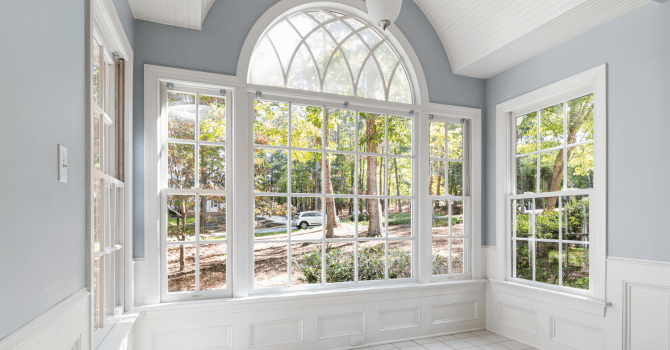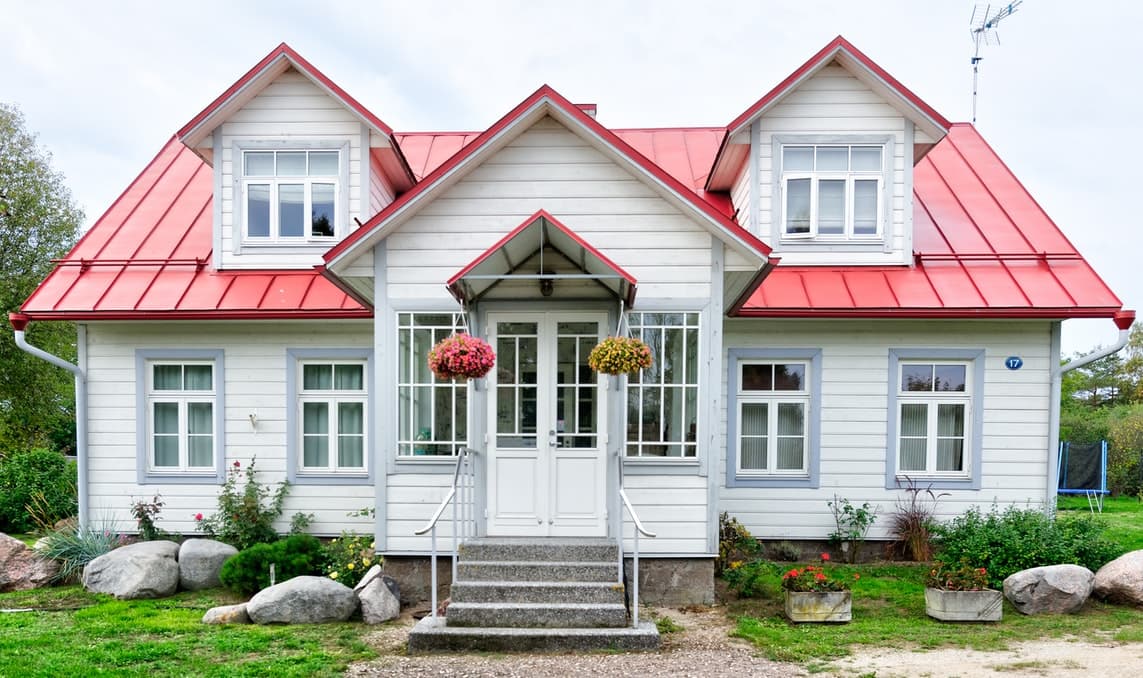Skylight Windows - What Types of Products Are Available?
By Editorial Team
Updated on October 4, 2024

Skylights allow natural light to filter inside homes, whilst providing a stunning view. Sitting high up on your ceiling, such a window helps brighten up darker areas around a room or adds ventilation in space-restricted spaces. A skylight is simply a rooftop glazed window that’s either dome-shaped, flat, fixed, or vented.
How can you go about selecting the right skylight window for your home? What are the upsides to installing a skylight? What options are there for houses with direct rooftop access?
Discover how you can create a bright and inviting interior, courtesy of a skylight window.
What Are the Three Main Types of Skylights?
Fixed Skylight

Source: Canva
A fixed skylight can be considered the most standard, basic skylight model. It doesn’t open nor provide rooftop access. It’s fixed inside the ceiling. This type of skylight is typically installed to bring additional light into a space, allowing family and friends to benefit from an additional view.
However, avoid installing this sort of skylight in a room requiring additional ventilation, given that it can’t provide any. Fixed skylights are typically used in attics and stairwells, and are the most common type of skylight found in houses.
Vented Skylight

Source: Google, crystaliteince
A vented or venting skylight can be opened, and this is what differentiates it from the two other models listed in this article. This type of skylight is sometimes referred to as a roof window. There are various styles of vented skylights, and depending on the manufacturer, they can either be opened manually or automatically via a concealed control button.
Such sophisticated skylights can be controlled remotely, manually, or with a motorized hand crank. Alternatively, it can be operated by a temperature-controlled sensor. Some models even close as soon as struck by the slightest raindrop. Talk about high-tech!
If you’re considering installing a skylight in your kitchen or bathroom, this would be the recommended model given that it works just like a regular window. Albeit a bit out of reach, it still removes excess moisture and heat found inside, allowing for steady airflow.
This is also the easiest type of skylight to clean. Moreover, depending on the skylight’s make and model, it can serve as an emergency exit.
Tubular Skylight (Sun Tunnel)

Source: Canva
This is the newest type of skylight on the market. It’s designed with a roof-level tube that’s channelled into the dwelling. It captures rooftop daylight via the tubular tunnel, redirecting it inside, toward a highly reflective skylight. The latter filters daylight throughout interior spaces. A tubular skylight uses optics, spreading the light over a large surface area. This is beneficial as the tube can be angled toward a desired direction. Some models have optional features, such as a light dimmer, which allows you to adjust the light level seeping inside the tunnel.
Sun tunnels are retailed in a range of sizes, and can easily fit between rafters and ceiling joists. Therefore, huge structural modifications to your home aren’t necessary. When installed, the unit is sealed to lock out dust, bugs, and moisture, so no worries on those fronts!
Given their size, this sort of skylight is better suited to smaller, restricted spaces where traditional skylights can’t be installed, such as an attic.
Another upside to this sort of skylight is its energy efficiency. Indeed, it can contribute to lowering costs associated with energy use by eliminating the need for artificial lighting during the daytime.
How Much Does a New Skylight Cost in Canada?
Type of Skylight | Cost |
Fixed skylight | $200–$1,600 |
Vented skylight | $600–$3,000 |
Tubular skylight | $400–$1,000 |
How to Install a Rooftop Skylight on Your House in Canada

Source: Canva
It’s important to get a professional’s opinion, as well as the necessary permits, prior to installing a skylight window, given that there a city-specific rules and regulations to follow. A building permit is often needed when installing such a window, and there are likely to be rules regulating the skylight size, design, and rooftop position. Once you’ve assessed whether you can move forward with your project, determine the skylight’s shape and size.
A skylight’s installation process will depend on the selected model. Unless you’re adding a small window that can fit between two roof beams, at least one of them will have to be trimmed to make space. Keep in mind that cutting a huge chunk of a beam can potentially weaken your roof’s structural integrity.
Make sure to include dummy rafters and joists, which will be inserted around the opening, reinforcing it. The way they're cut will depend on the skylight’s size as well as its positioning.
FAQ Skylight Windows
What is a common problem with skylight roof window installations?
Skylight windows were designed to allow daylight to seep inside dwellings. However, a poorly positioned skylight can’t bring in too much light, creating an uncomfortable glare.
Beyond the light of it all, it also generates heat, which can be an upside during wintertime. However, if the glazing isn’t suited to regional climate conditions (heat control glazing), this heat gain can become rather uncomfortable during the summer. The solar heat gain coefficient indicates the amount of heat you’ll be exposed to with a standard window or skylight.
On the flip side, if it’s not insulated properly or if the seams are deteriorating, skylights can lead to wintertime heat loss and leaks.
The last downside concerns skylight maintenance and care. Indeed, skylights tend to accumulate dust and dirt, requiring regular cleaning. It can be quite a strenuous process, especially if hard to access.
Where to install a skylight?
Below are two tips to help you position your skylight optimally:
South-facing: A rooftop-installed, south-facing skylight will benefit from better sunlight exposure throughout the day. This will bring in optimal natural light, especially during the winter.
Avoid full-on east- or west-facing installations: Rooms facing either east or west get more direct and intense sunlight in the mornings and afternoons, risking overheating.
Where to buy skylights, and is VELUX the best skylight window brand?
VELUX is widely known as one of the best skylight brands globally.
A reputable Canadian brand, Columbia Skylights, also retails a wide range of skylights and roof windows, available at retailers like Home Depot and RONA. This brand offers ENERGY STAR-certified options, suited to the Canadian climate.
Other brands like Fakro and Solatube also offer competitive products and are decent alternatives.
Looking for something else?
Related articles
The latest industry news, interviews, technologies, and resources.

Editorial Team
•02 Dec 2024
As the winter season approaches, ensuring warmth in your home is very important. Dozens of studies indicate that windows can represent a significant fraction of the total energy consumption of a building. Therefore they are an important subject of efforts of window companies Halifax to reduce energy losses. In this article, we are going to look at techniques for insulating the windows, how to regulate them, and how to cover the gaps to secure your house for the winter season.

Editorial Team
•31 Mar 2025
It’s a well-known fact that windows are more than a vital part of a home. During the day, they allow natural sunlight to seep in, and in summer, they allow for a nice, occasional breeze of fresh air.

Léa Plourde-Archer
•23 Jul 2025
Have you noticed a crack in your home's foundation walls? Are you hoping to repair it before it gets worse? RenoQuotes.com has the ideal solutions to renovate your home's foundation.

Editorial Team
•07 Nov 2023
Do you need to redo your exterior staircase soon? We’d say it’s a safe bet that you may have some doubts about the material choices. So what’s the best option for this type of project? In order to determine which material is right for you, we’re here to offer some things to think about.

Cynthia Pigeon
•07 Nov 2023
Did you know that windows and glass doors are majorly responsible for heat loss in homes? Therefore, energy efficiency is a determining factor when it comes to changing your windows to maximize energy savings.